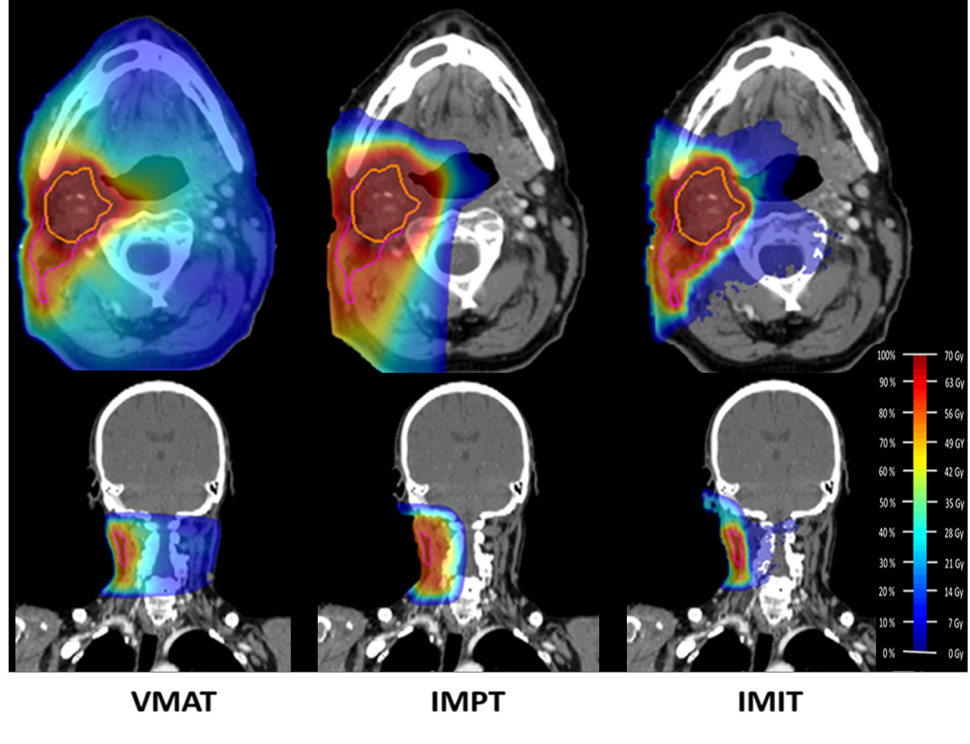Background and Purpose
In this multicentric in silico trial we compared photon, proton, and carbon ion radiotherapy plans for re-irradiation of patients with squamous cell carcinoma of the head and neck (HNSCC) regarding dose to tumour and doses to surrounding organs at risk (OARs).
Material and Methods
Twenty-five HNSCC patients with a second new or recurrent cancer after previous irradiation (70 Gy) were included. Intensity-modulated proton therapy (IMPT) and ion therapy (IMIT) re-irradiation plans to, again, a total dose of 70 Gy were compared to photon therapy delivered with volumetric modulated arc therapy (VMAT).
Results
When comparing IMIT and IMPT to VMAT the mean dose to all 22 OARs was statistically significantly reduced for IMIT and to 15 out of 22 OARs (68%) using IMPT. The maximum dose to 2% volume (D2) of the brainstem and spinal cord were statistically significantly reduced using IMPT and IMIT compared to VMAT. The data are available on www.cancerdata.org.
Conclusions
In this ROCOCO in silico trial, a reduction in mean dose to OARs was achieved using particle therapy compared to photons in the re-irradiation of HNSCC. There was a dosimetric benefit favouring carbon-ions above proton therapy. These dose reductions may potentially translate into lower severe complication rates related to the re-irradiation.

A set of re-irradiation treatment plans for a patient with a nodal recurrence of oropharynx carcinoma of the right tonsillar fossa, rcT0N2aM0. In the VMAT (left column), IMPT (middle column) and IMIT (right column) plans, the CTV1 (pink) and high-dose CTV2 (orange). A range of high dose (red) to low dose (blue).